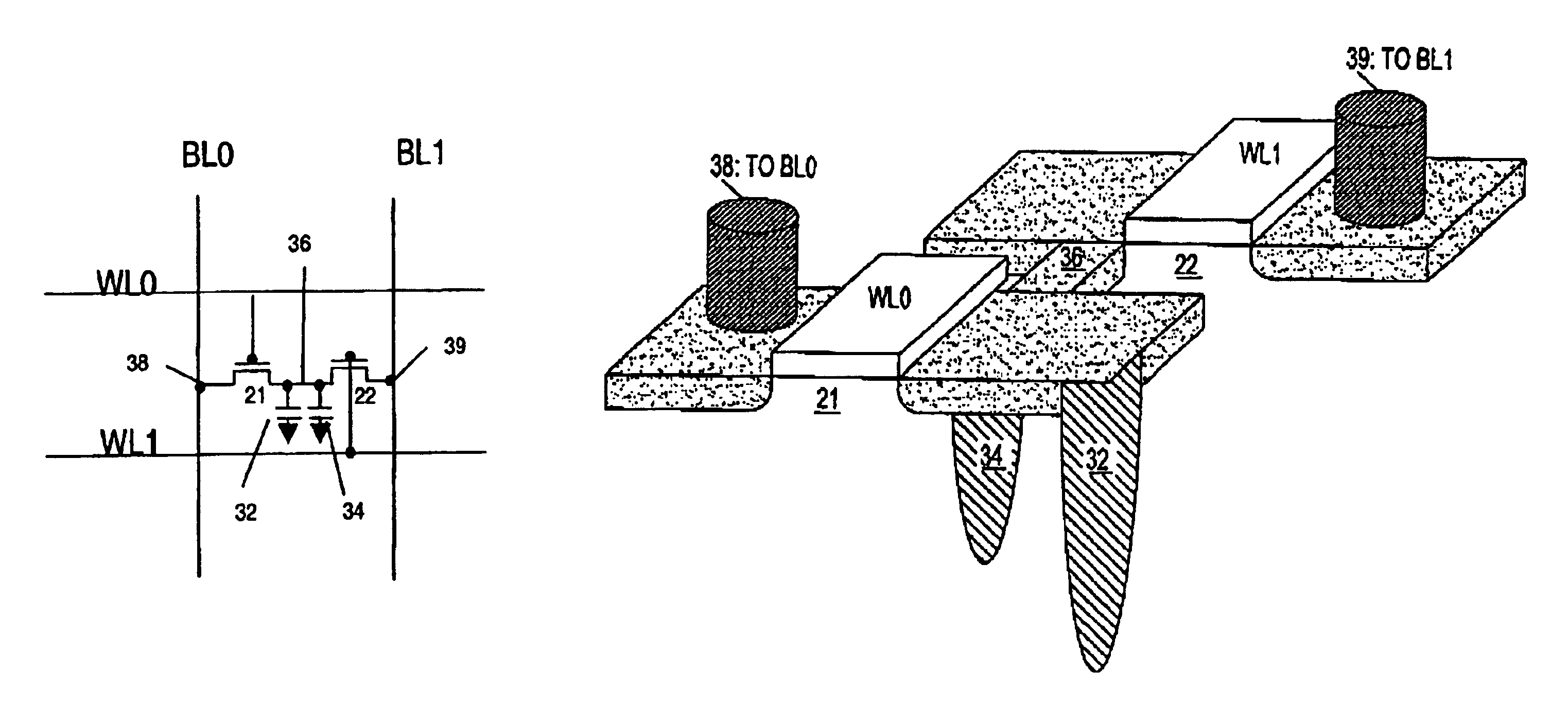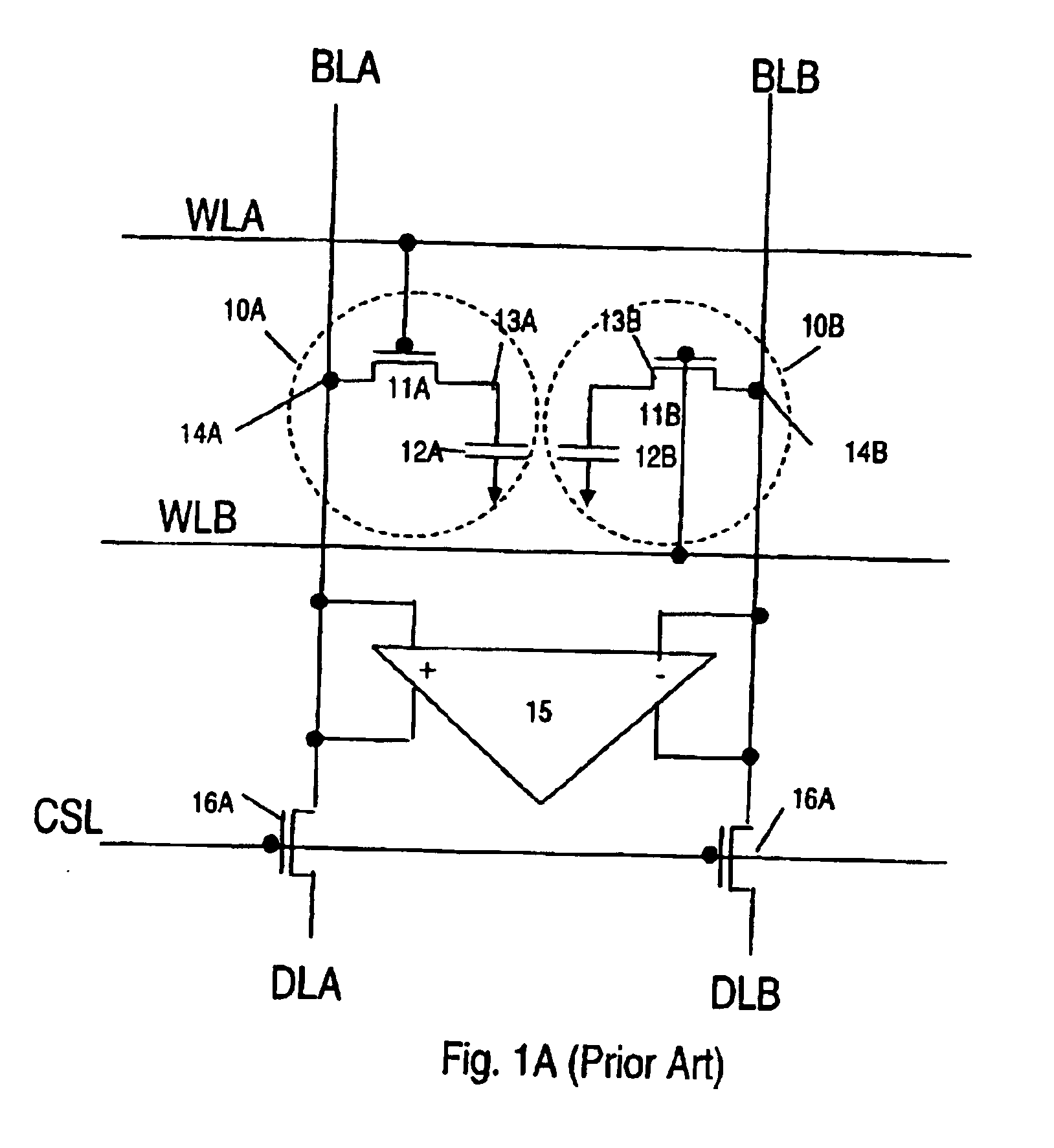Structure and system-on-chip integration of a two-transistor and two-capacitor memory cell for trench technology
a technology of memory cell and transistor, applied in the field of structure and system-on-chip integration of two-transistor and two-capacitor memory cell for trench technology, can solve the problems of halving the cycle time, reducing the performance of commodity drams, negligible improvement of the performance of conventional embedded drams, etc., and reducing the write mode performance. , the effect of reducing the storage charge and prolonging the retention period
- Summary
- Abstract
- Description
- Claims
- Application Information
AI Technical Summary
Benefits of technology
Problems solved by technology
Method used
Image
Examples
Embodiment Construction
FIGS. 3A and 3B show respectively a transistor level schematic and a cross-section of the inventive 2-port memory cell when applied to trench technology.
Referring to FIG. 3A, there is shown a two-port memory cell consisting of two NMOS access transistors 21 and 22 coupled to a corresponding wordline (WL0 for port 0 and WL1 for port1) and corresponding bitline (BL0 for post 0 and BL1 for port1). Unlike a conventional 2-port memory cell having one capacitor (see FIG. 2), the 2-port memory coil includes two capacitors 32 and 34. By utilizing two transistors and two capacitors to form the cell, the structure of the inventive 2T 2C cell shown in FIG. 3A can achieve full compatibility with the 1T 1C DRAM cell shown in FIG. 1. This is achieved by coupling storage node 36 of the two 1T 1C cells by way of a diffusion connection 36, as shown in FIG. 3B, while keeping the two trench structure of the 1T 1C cell shown in FIGS. 1A and 1B. Storage node 36 can be accessed by either port 0 or post 1...
PUM
 Login to View More
Login to View More Abstract
Description
Claims
Application Information
 Login to View More
Login to View More - R&D
- Intellectual Property
- Life Sciences
- Materials
- Tech Scout
- Unparalleled Data Quality
- Higher Quality Content
- 60% Fewer Hallucinations
Browse by: Latest US Patents, China's latest patents, Technical Efficacy Thesaurus, Application Domain, Technology Topic, Popular Technical Reports.
© 2025 PatSnap. All rights reserved.Legal|Privacy policy|Modern Slavery Act Transparency Statement|Sitemap|About US| Contact US: help@patsnap.com



